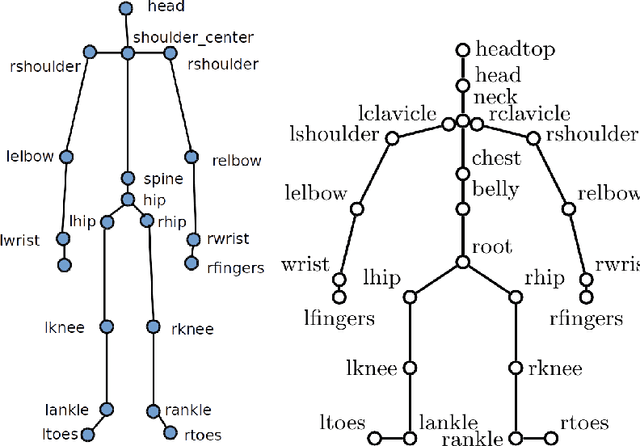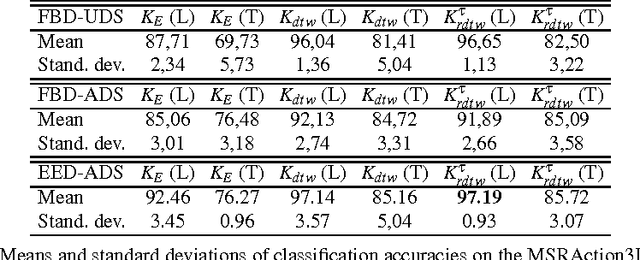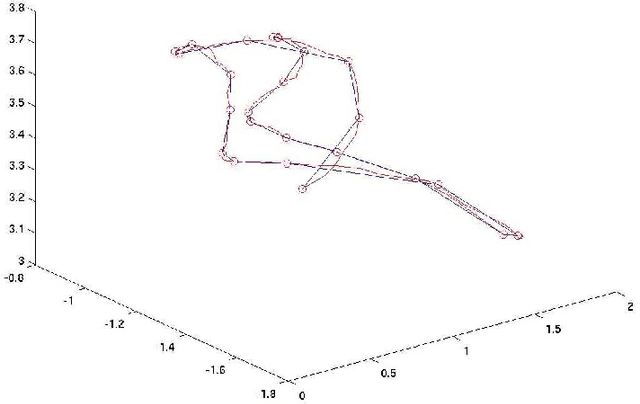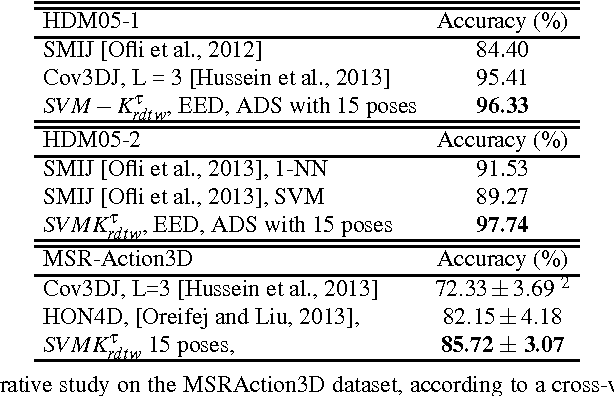Adaptive Down-Sampling and Dimension Reduction in Time Elastic Kernel Machines for Efficient Recognition of Isolated Gestures
Paper and Code
Nov 23, 2016



In the scope of gestural action recognition, the size of the feature vector representing movements is in general quite large especially when full body movements are considered. Furthermore, this feature vector evolves during the movement performance so that a complete movement is fully represented by a matrix M of size DxT , whose element M i, j represents the value of feature i at timestamps j. Many studies have addressed dimensionality reduction considering only the size of the feature vector lying in R D to reduce both the variability of gestural sequences expressed in the reduced space, and the computational complexity of their processing. In return, very few of these methods have explicitly addressed the dimensionality reduction along the time axis. Yet this is a major issue when considering the use of elastic distances which are characterized by a quadratic complexity along the time axis. We present in this paper an evaluation of straightforward approaches aiming at reducing the dimensionality of the matrix M for each movement, leading to consider both the dimensionality reduction of the feature vector as well as its reduction along the time axis. The dimensionality reduction of the feature vector is achieved by selecting remarkable joints in the skeleton performing the movement, basically the extremities of the articulatory chains composing the skeleton. The temporal dimen-sionality reduction is achieved using either a regular or adaptive down-sampling that seeks to minimize the reconstruction error of the movements. Elastic and Euclidean kernels are then compared through support vector machine learning. Two data sets 1 that are widely referenced in the domain of human gesture recognition, and quite distinctive in terms of quality of motion capture, are used for the experimental assessment of the proposed approaches. On these data sets we experimentally show that it is feasible, and possibly desirable, to significantly reduce simultaneously the size of the feature vector and the number of skeleton frames to represent body movements while maintaining a very good recognition rate. The method proves to give satisfactory results at a level currently reached by state-of-the-art methods on these data sets. We experimentally show that the computational complexity reduction that is obtained makes this approach eligible for real-time applications.
 Add to Chrome
Add to Chrome Add to Firefox
Add to Firefox Add to Edge
Add to Edge